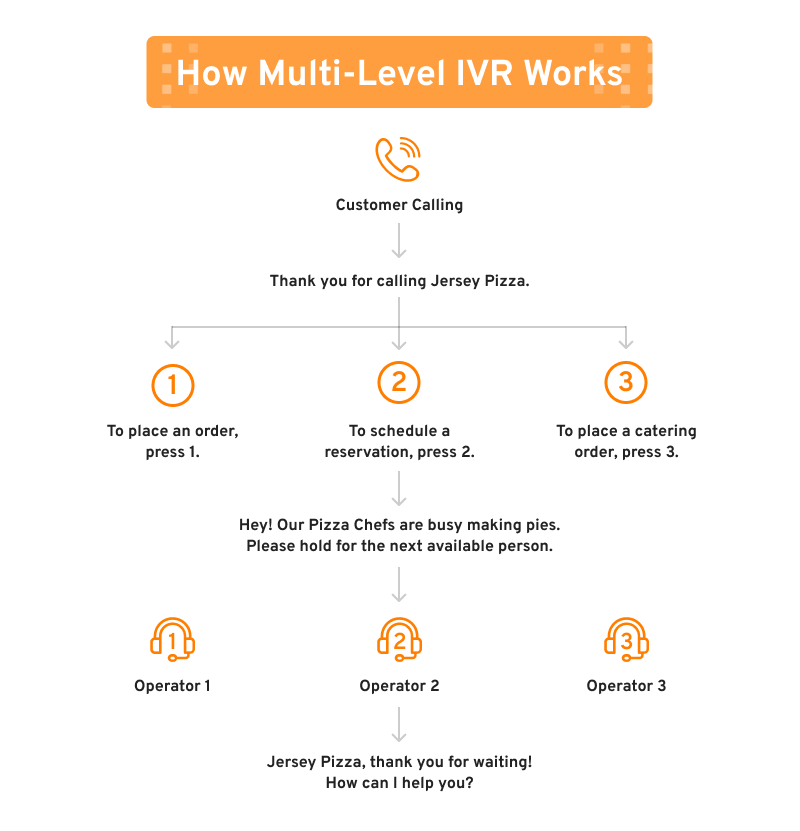
What is Multi-Level IVR & How Does it Work?
What is Multi-Level IVR & How Does it Work? https://www.voicenext.com/wp-content/uploads/2024/03/Untitled-design195.jpg 1024 680 VoiceNEXT | Your Next Phone Company https://www.voicenext.com/wp-content/uploads/2024/03/Untitled-design195.jpgWhat is Multi-Level IVR & How Does it Work?
As business owners, the acronym IVR (Interactive Voice Response) may not initially summon up visions of customer interaction bliss, but it is a fundamental tool in enhancing the customer experience, reducing operational costs, and managing call traffic. A particularly structured implementation of IVR, known as multi-level IVR, takes these advantages and stacks them upon one another, creating a system that not only fields a question and provides information but also directs calls with efficiency unrivaled by traditional IVR designs. In this comprehensive guide, we will deconstruct the complexities of multi-level IVR, understand its operation, and recognize its diverse range of benefits.
The Essence of Multi-Level IVR
So, let’s first grapple with the basics. What exactly is multi-level IVR, and why is it a game-changer for businesses that rely on effective call management?
Multi-level IVR, also known as an auto-attendant, is an extension of traditional IVR systems that organize menu structures into more than one independent level. Each level can have an assortment of options that allow callers to navigate through a sequence of choices to reach their preferred destination.
For businesses with a diverse range of operations or a vast customer base, multi-level IVR can be tailored to handle different departments, services, and geographies with specific prompts and routing protocols. The application of this further segmentation ensures that customers are quickly and accurately routed to the appropriate destination.
The Mechanics Behind the Voice
Now that we’ve laid a foundation, let’s delve into the cogs and gears of this system. How does multi-level IVR work exactly?
When a call is received, the IVR system greets the caller and prompts them to make a selection. This selection could take the form of verbal commands or keyed inputs. Based on the input, the IVR system will then follow a pre-set scripted path that leads to the next prompt or eventual call destination. If needed, a call flow can be altered based on various factors like time of day, call volume, or historical caller data—all in the quest for efficiency and optimization.

Unearthing the Benefits of Multi-Level IVR
After understanding the structural powerhouse that is multi-level IVR, it’s time to appreciate the business benefits that it unfurls.
Multi-level IVR empowers businesses with self-service, allowing customers to resolve their issues without human intervention, substantially reducing customer service costs. Additionally, the intelligent routing leads to quicker issue resolutions and fosters customer satisfaction. Moreover, it allows businesses to operate 24/7/365 without human resources, catering to customers across different time zones and regions.
How VoiceNEXT Personalizes Multi-Level IVR for Your Business
Embracing multi-level IVR can be a significant step toward improving your customer service landscape. But how do you transform this theoretical understanding into a practical reality for your business?
With VoiceNEXT, you can craft a multi-level IVR that’s robust and scalable, allowing you to reduce wait times, improve call resolution rates, and streamline operational efficiency at your business. Reach out to VoiceNEXT and experience the transformative power of multi-level IVR today.



